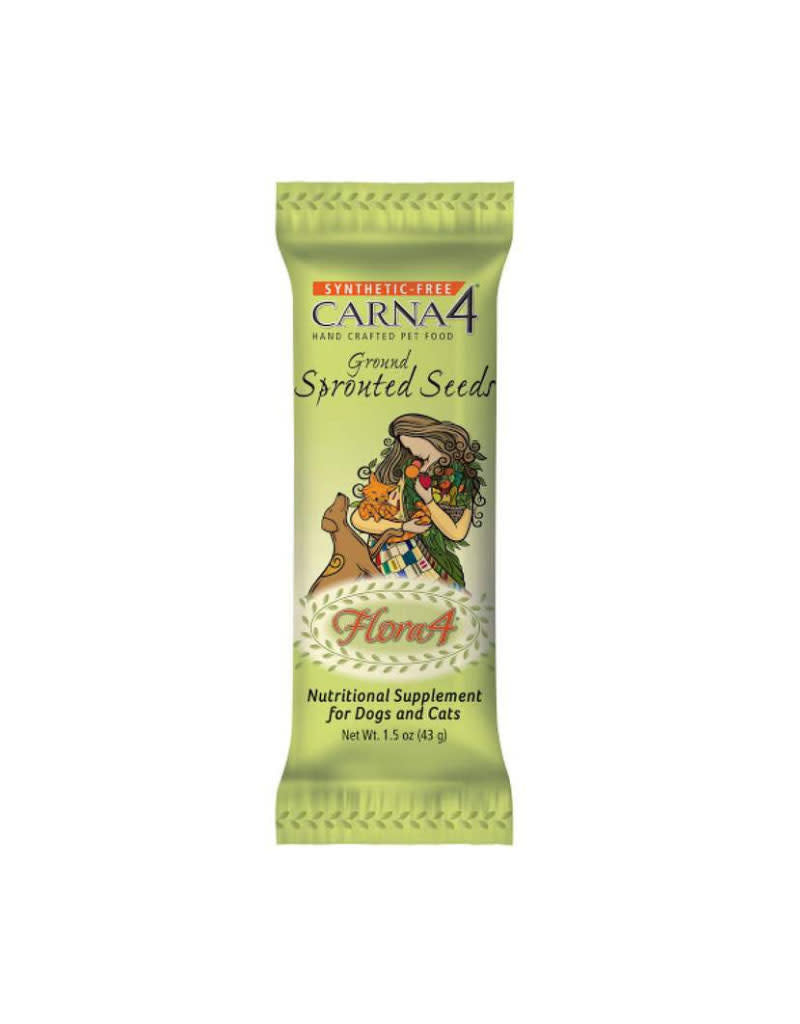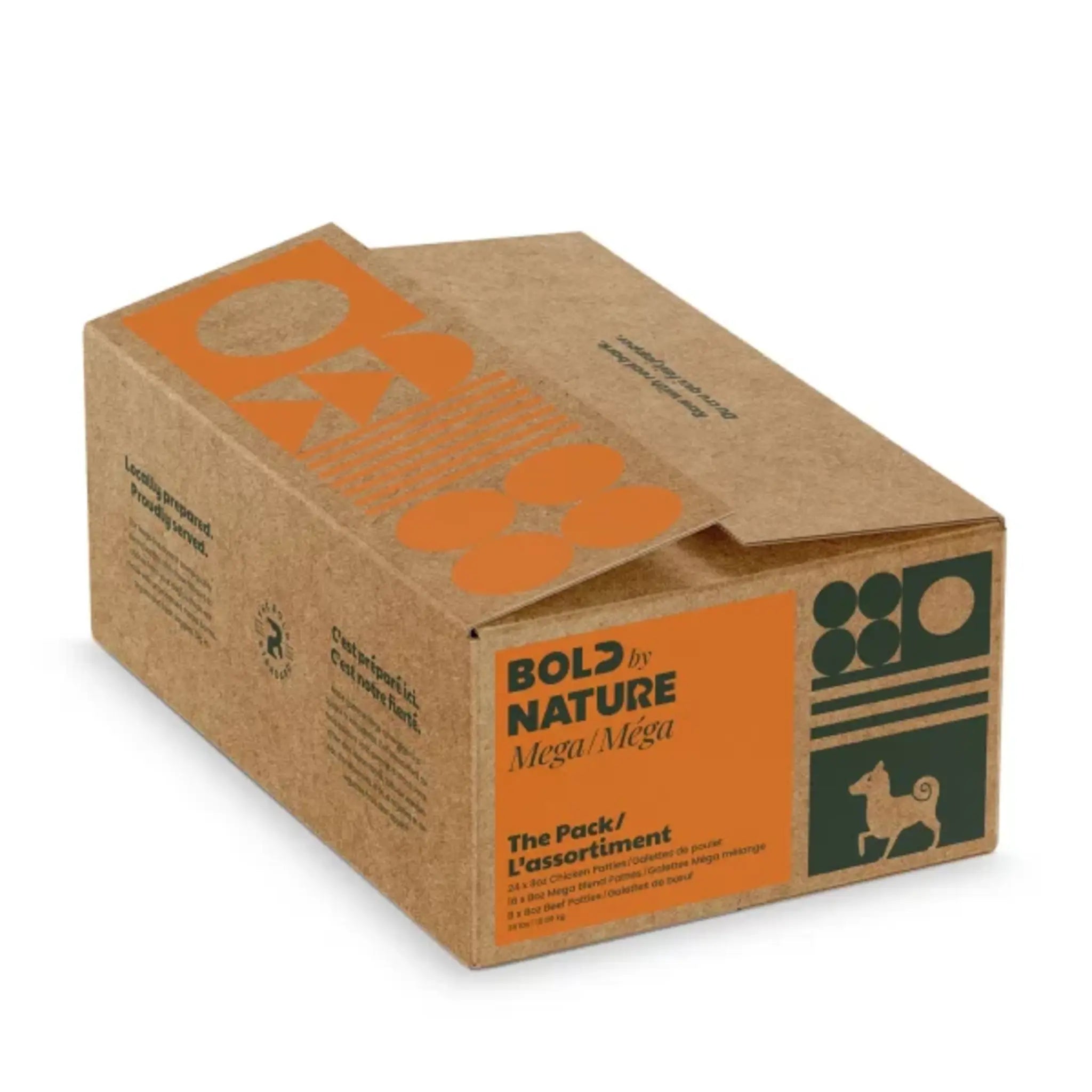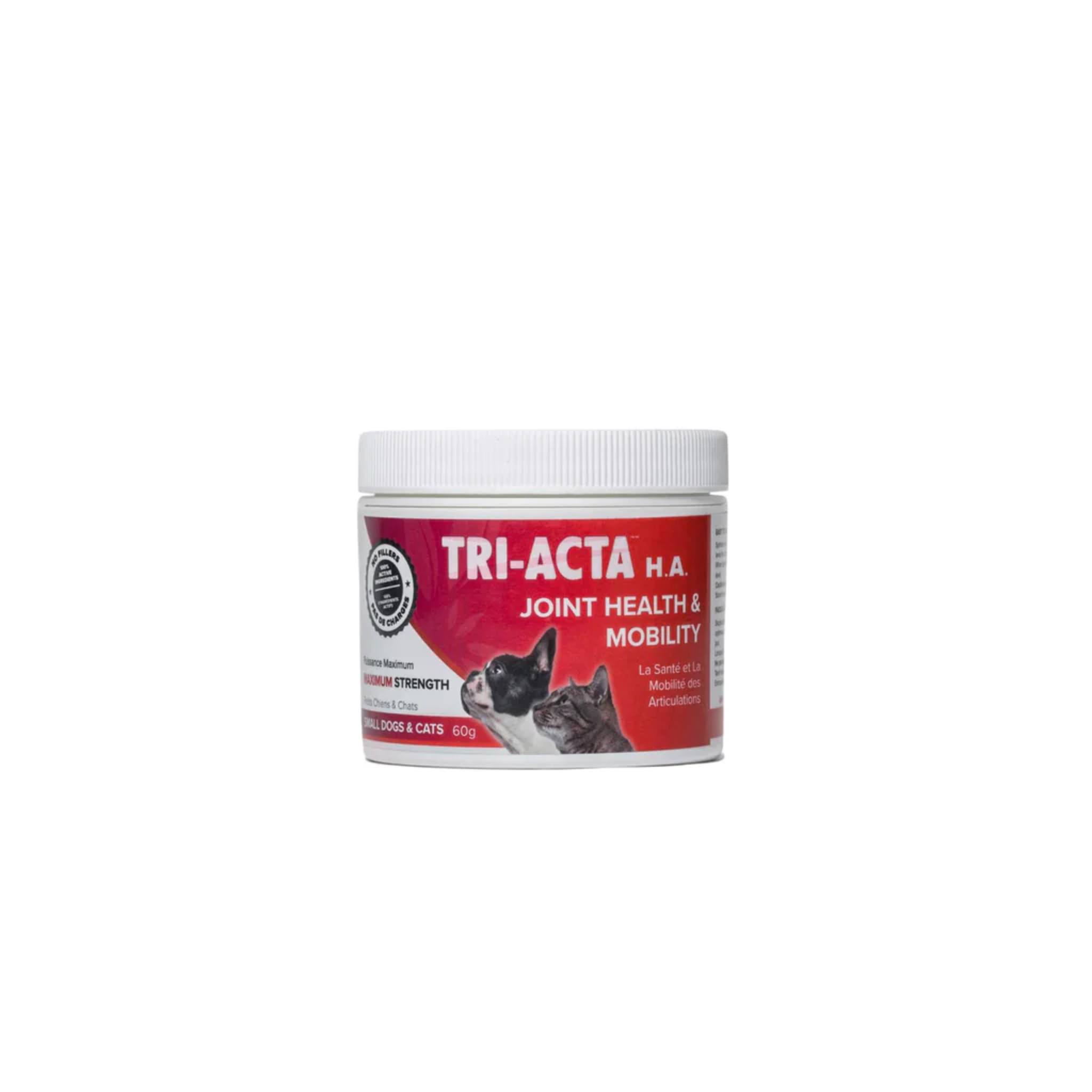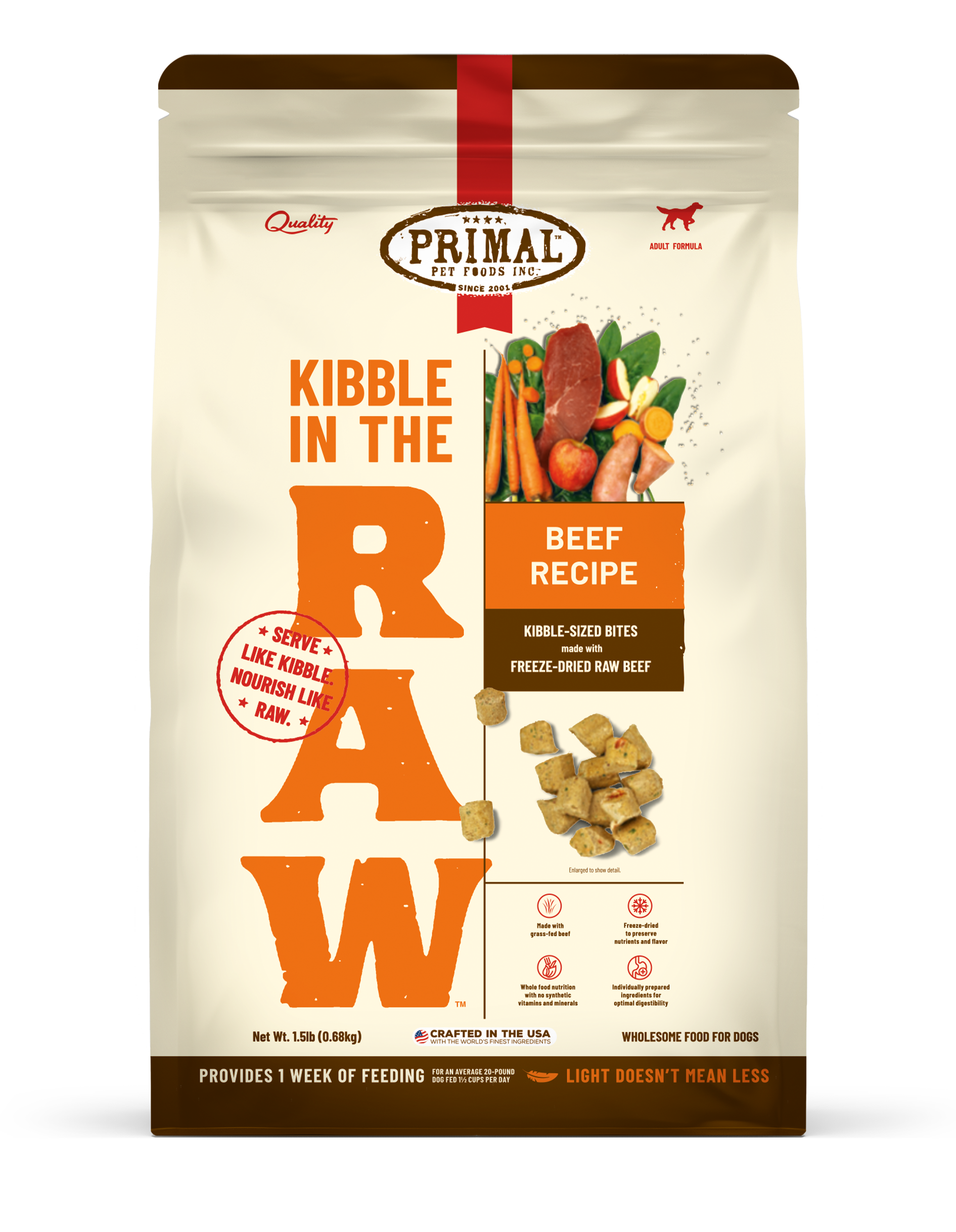Choosing your pet's food is a crucial aspect of pet ownership. Whether it's your first pet and you've no idea where to start, you're looking to improve on previous efforts with past pets, or you're experiencing a digestive or skin and coat issue and need a change. There is a broader selection of pet food on the market than ever, which can feel overwhelming for some pet parents. Today's choices are also worth celebrating, as there's an increasing commitment to quality and variety within the pet specialty industry.
What is the best pet food?
Many people start here, and it's a fair question! You want the best for your dog, and you want to know where your choices rank. If you've discussed nutrition with us before, you'll know that when we're asked this question, we've a list of questions we ask in return, long before we guide you to a particular food type, brand, or formula.
This blog will focus on the framework for objectively choosing pet food rather than on specific brands. Here, we discuss our ranking for pet food categories (Raw, Dry, Canned, etc.). We typically avoid ranking brands, as it lacks context that may be important to the individual reader. Our own can be seen by what we carry. We believe we have products that all rank at the top for specific reasons.
It's essential to note that food cannot be judged solely by category. There is always a range of quality within each category; a complete and balanced food from a lower-ranking category is superior to an incomplete or imbalanced food from a higher-ranking category. This is an important distinction!
All dogs are different!
This is the prime reason why answering the question "What is the best food?" is difficult. Despite having many similar characteristics, dogs are individuals, and what works for one dog might not work for another. Whether it's taste, texture, digestive sensitivities, or allergies, there is a long list of reasons why one dog may have different needs than another.
We receive input from all over: family, friends, neighbours, the nice person from the dog park, social media, and beyond. We encourage you to always wear your critical thinking hat before accepting advice as a sure thing. If finding the right diet for your pet becomes discouraging, remember these two key points: your pet may have unique nutritional needs, and we're here to help you.
I do not mean to be overly dramatic. Of course, we can listen to our family and friends talk about exciting pet products! One of my goals here is to prepare you for the possibility that, despite the best intentions and "the best food money can buy," you may find yourself in a situation where something doesn't agree with your pet. In an upcoming blog, we'll look at troubleshooting your pet's diet.
Core factors in choosing a pet food
We've discussed the possibility that your dog may have unique needs compared to others and how defining "the best" is a subjective question that shouldn't be answered without follow-up questions. These are two key points that have enabled us to serve our clients well. Next, we'll examine the core elements when choosing pet food.
Budget
Calculating daily consumption is a simple starting point. Determine your pet's daily feeding needs based on age and activity level. Multiply by 30 to get your average monthly food spend. This process can be easily repeated across brands and formulas. We recommend starting with the brand's feeding guide, emphasizing that it serves as a starting point. You'll need to monitor your pet's shape and weight to determine if more or less food is required.
Where possible, we don't recommend shopping exclusively on price. While not an exact science, the phrase "you get what you pay for" is somewhat applicable when buying dog and cat food. Generally speaking, the higher the quality of the ingredients, often focusing on high-quality meat inclusions, the higher the price; however, that does not mean you need to spend a fortune. Note that you often feed less of a higher-quality food at each meal, which explains why we can't compare bag prices against each other, even if they're the same size. As a general rule of thumb, cheaper foods tend to have inferior ingredients, requiring more food to be consumed per meal. I've had clients transition from feeding 6 cups of a mass-market grocery brand food to 4 cups of a non-mass-market food, making the price per feed equivalent or cheaper while providing better nutrition!
There are several different bag sizes, e.g. 20 lbs, 22 lbs, and 25 lbs, which are all considered large bags. Medium bags range from 9 lbs to 15 lbs, and small bags from 2 lbs to 8 lbs. Start by calculating the price per pound, followed by the cost per feed. Price is important, but it needs to be put into context.
With most foods, the larger the bag or box you buy, the lower the cost per pound. This can be a great way to save money for the same product. Once a bag is opened, the freshness clock starts ticking. We typically recommend consuming a bag of food within 4-6 weeks after opening, provided it is adequately sealed and stored between meals. Product degradation can start to occur after that, and our focus is on providing premium nutrition as often as possible. It's reasonable to suggest that properly stored food can remain safe for consumption beyond 6 weeks. However, we're focusing on optimal freshness and nutrition. You've spent good money on food, and we want it to be at its best for your pet.
Lifestyle & Convenience
Mealtime is undoubtedly a special time for most pets. They look forward to it with great anticipation. It's worthwhile to consider the impact on your own routine when planning and preparing for mealtime to ensure it remains a special time for both you and your pet. Feeding your pet frozen raw can be a great way to optimize their diet. Keep in mind it comes with some additional requirements, such as freezer space (buying in bulk can be a great way to save), thawing food, and cleaning bowls and your prep space, just like we would when handling our own raw food. Gently cooked foods are often frozen and will also require freezer space and thawing time. Dry foods are more convenient, generally requiring only a cool, dry place and a tight seal on the bag. Whatever you decide to feed, don't overlook what you're feeding IN. Bowls are also an important part of the process. We recommend Stainless Steel bowls across the board. Silicone works, but you don't want it to be used as a chew toy! Glass is okay, but it's breakable. Ceramic is breakable, and the glaze or paint may contain lead. We never recommend plastic bowls. Don't forget to clean those food and water bowls regularly!
Ingredients
When it comes to pet food, there should be no doubts: it's what's inside that counts!! I love attractive packaging, and undoubtedly, it influences our buying decisions. However, food isn't something we wear, like a nice shirt or shoes. That said, good food can improve your pet's external appearance. The skin, coat, nails, eyes, ears, teeth, gums, and energy levels of our pets can all be positively or negatively impacted by the quality of the food they consume.
We won't discuss specific ingredients today, but we'll focus on a few high-level points to help you get started. Meat is essential for most cats and dogs. Cats are obligate carnivores, meaning their diet must be rich in protein and fat from animal sources. Dogs are omnivores; however, it's generally believed they have a bias for carnivorous diets, and we believe it supports optimal health.
What to look for:
- Named animal protein sources*: Chicken, Turkey, Beef, etc. - We want them to be listed as the first ingredient on the label, and our preference is for more than one to be included at the beginning, but a minimum of a few higher up on the list. Quality muscle meats and organs are a great inclusion for your cats and dogs
- Meat meals: Our general rule is that meals are acceptable when used by a reputable producer. We prefer they are not first on the list, or at least paired with some muscle meat. Keep in mind this is a cheaper ingredient than genuine meat (think protein powder) and is more processed (rendered)
- Avoid "by-products": Lesser quality protein inclusions are often found in cheaper foods. Remember that for by-products and meals, a named version (such as chicken) is still preferable to an unnamed one. Named is always better!
- Grain-Free vs. Grain-Inclusive: This has been a popular trend over the past 10-15 years. It's ultimately up to you. Kibble needs a carbohydrate source to bind it together, so it's a difference in carbohydrate sources rather than necessarily GF vs. GI
- Grains: If you prefer grains, look for those with a low glycemic index, such as oats and barley, versus higher glycemic grains like corn, wheat, and white rice. These higher GI grains are typically more known as allergens than lower GI grains. These grains are also more commonly referred to as fillers
- Grain-Free: Watch for ingredient splitting, e.g. red lentils and green lentils. When combined, they would be higher up on the ingredient list, as ingredients are listed by pre-cooked weight
- Undecided on Grains and Grain-Free? That's completely okay! We support going back and forth, or mixing and matching, as you see fit. Just use the tips above to determine which foods have better options for each type
- Preservatives: Look for natural preservatives, such as tocopherols (Vitamin E), over artificial preservatives like BHA, BHT, or ethoxyquin.
- Artificial Colours and Flavours: Avoid! They're completely unnecessary and can cause harm
- More names: When it comes to named ingredients, it doesn't stop at meat. Ingredients like fat should also be named. E.g Chicken Fat vs Animal Fat
- Gut Health: Products that contain additional prebiotics and probiotics are generally considered better. Compare quantities of probiotics with other foods to see if a brand is putting the bare minimum in to make it look good
These are quick, foundational things to look for when analyzing pet food ingredients, but other factors are at play. Talk to your local pet specialty retailer if you have any questions. They'd love to provide information and healthy options for all budgets and lifestyles!
Guaranteed Analysis and Typical Analysis
You'll find the Guaranteed Analysis on pet food labels (if you don't, run!). It lists the minimum levels of macronutrients protein and fat and the maximum levels of fiber and moisture. It ensures the food meets basic nutritional standards but is based on "as fed" values, which include water content. In contrast, Typical Analysis provides average nutrient values from lab tests, offering more detailed information. Check the company's website for this information. It should be located with each product. It is considered a positive step for a company to share this level of detail. If they don't have it, you can reach out to them and inquire.
Note: We're using the Guaranteed Analysis figures, which specify minimums for protein and fat. They are likely understated, meaning the estimated carbs are likely less than the calculation will reveal. However, we still want a lower number. We recommend %, and the lower, the better.
Sidebar: We mentioned "as fed," which includes moisture, making it difficult to directly compare things like protein, fat, and fiber for dry foods against those for wet foods. A can of wet food will have a significantly lower protein content in the Guaranteed Analysis due to its high moisture content. To compare, you need to perform a dry matter calculation, which removes moisture as a variable, allowing you to compare the two items more accurately. I won't delve into the calculation for the purposes of this article, but there are numerous online calculators that make the process easier.
While we're on calculations, here's a quick way to calculate estimated carbs in pet food:
100 - Protein - fat - moisture - ash = estimated carbohydrates
What about fibre? It's a type of carb and will be figured into the total estimated carbohydrates.
Ash content not listed on the bag? That's okay. You can use between 6-8%, which is the typical range for dry food. For wet food, ash is typically 1-2%
What's Ash? It's worth noting that ash is not a filler ingredient; it's certainly not ash from a fire added to your pet's food. Ash is the inorganic mineral content remaining when a food is incinerated. It's the measurement of essential minerals, such as calcium, phosphorus, and zinc, that dogs need for proper nutrition. The ash content varies based on ingredients, with higher meat content often resulting in higher ash levels
Rotational Feeding
Regardless of which brand or food type you initially choose, one of the best choices you can make for your pet is to feed a rotational diet. This can mean a few different things, but most commonly, it means rotating the proteins that your pet receives. If the brand you've chosen has 5 different formulas, we recommend using all of them as often as reasonably possible. This doesn't mean buying all 5 bags at once; it simply means rotating which formulas you buy. Note that a second definition for rotational feeding involves mixing food types, brands, and formulas, and consider adding toppers, when possible, from other food categories, such as bone broths, fermented milks, tripe, and canned food. Have fun with it!
That sounds great, but why rotate?
Rotational diets offer a variety of important benefits:
- Reducing the risk of food allergies and intolerances and supporting a stronger immune system
- Imitates a natural diet where a variety of prey would be consumed
- Improving digestion by supporting a diverse microbiome in the gut
- Prevent boredom and enhance mealtime enjoyment! This one may be the easiest for humans to relate to!
- Supply disruption - if you have a wide variety of foods you feed, if you run into a supply chain disruption, finding an alternative is easy
If your pet has a history of sensitivities or intolerances, introducing new things may be slow, but don't let that stop you from trying! Make small, incremental changes you can track. Changing too many things at once can cause issues, and it's challenging to pinpoint the root cause when multiple variables are in play.
Pet specialty shops like ours are typically staffed with knowledgeable individuals who want to help you find the best products for you and your pets. We also love talking about nutrition so come on by and ask whatever questions you want. We don’t always
Feeding for your pet's life stage
Most cats and dogs experience three core life stages. There are schools of thought that cats, in particular, have more life stages, and that's okay. I think the more we explore opportunities to optimise health, the better, and if that means identifying more life stages, I'm all for it! However, for the purposes of this exercise, we'll stick with the three main life stages. To stay on track with the current theme and avoid making this overly lengthy (I'm already pushing it, I know!), we will focus on core concepts and refrain from delving into specific numbers for individual nutrients, etc.
- Puppy/Kitten: This is the growth stage. With some notable exceptions, most breeds complete their growth in the first year. They need a diet containing more dense nutrition to support this rapid growth. The notable exception is large breed puppies, who have specific nutrient requirements, like calcium and phosphorous, to prevent orthopedic issues like hip dysplasia.
Our recommendation: Feed a puppy or kitten food from a reputable brand for dry food. For large-breed puppies, opt for Large Breed Puppy formulas for the recommended duration, which can range from 12 to 24 months, depending on the breed. For Raw feeders, it can be anywhere between 5-10% of their body weight on average. Some recommend feeding 2% of an animal's anticipated adult weight, but this can be a challenge.
- Adult: This is a maintenance phase where growth is complete, and we need to provide a high-quality diet to maintain muscle mass, energy, good health, and a healthy weight. You'll no longer need puppy or kitten food, as this can lead to excess nutrients, resulting in weight gain and even obesity. Obesity is often overlooked in pets, and it's something we should take very seriously. We are the sole advocates for our pets' health, and we encourage you to make the best possible decisions you can!
Our recommendation: Feed an adult food appropriate for the species. For Raw food, you'll feed roughly 2% of their body weight daily, with an average range of 1.5-3%. Observe and monitor their body shape and adjust feeding (+/-) as needed. Note that there are many large breed adult food options, but they often contain only, or primarily, poultry as the main protein. As noted above, we recommend a rotational diet, so try to include adult/maintenance foods with varied or rotational proteins, provided they are suitable for large breed dogs.
- Senior: You'll find many interpretations, but to put a number on it, it's often referred to as 7+ for dogs and 10+ for cats. I believe this stage is less predictable as everyone ages differently. I'm not saying there's no room for senior food, but of all the life stage foods, I'd rank this far down the list for importance for most pets.
Our recommendation: If your pet has received a clean bill of health, shows no significant signs of aging, and has relatively high energy levels, we recommend sticking with a rotational diet of high-quality adult food. Supplements can be considered throughout their entire life to prevent future health concerns.
A final note on Senior Diets: I've heard many owners over the years say things like "my dog is a senior now, and I'd like to give them the best." That's great, and I fully support it. We are true believers in the philosophy that 'better late than never,' and some is always better than none when it comes to quality additions to our pets' diets. I want to stress that things like disease and health conditions can be lurking when we don't see them on the outside. Becuase of this, we encourage you to do the very best you can with your pet's diet as early and often as possible, as we believe wholeheartedly that it gives them the best shot at a higher quality of life. A reminder that doing your best is what's important, not trying to keep up with someone else's version of 'best'. This is a judgement-free zone focused on education and practical pet ownership.
Summary
If you came here looking for a list of the best pet food, I apologize if I let you down! That said, if you've made it this far, I hope you can walk away with a new perspective and a solid framework for approaching your pet's diet. It's not just about Brand A or Brand B. It's about having a plan, knowing the high-level things to focus on and/or avoid, and connecting with educated pet specialty retailers and resources to help you make the best choices for you and your pets because ALL PETS ARE DIFFERENT :)
More on Meat Meals: https://www.petfoodindustry.com/pet-food-market/blog/15467340/not-all-meat-meals-in-pet-food-are-created-equal
Grindstone Pet Supplies
419 Dundas Street E, Unit 6
Waterdown, Ontario
L8B 0K4






Leave a comment